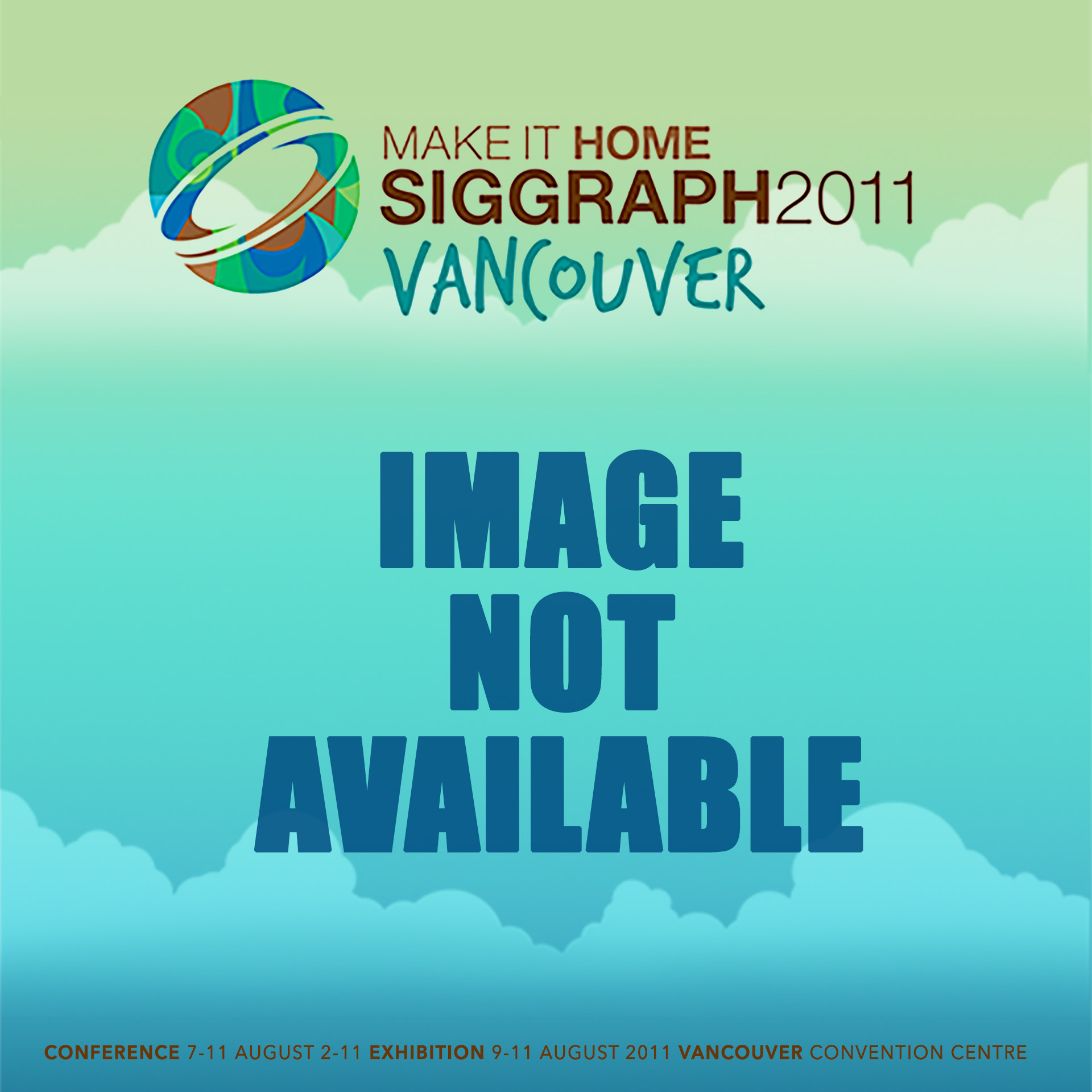“Exploration of continuous variability in collections of 3D shapes” by Ovsjanikov, Li, Guibas and Mitra
Conference:
Type(s):
Title:
- Exploration of continuous variability in collections of 3D shapes
Presenter(s)/Author(s):
Abstract:
As large public repositories of 3D shapes continue to grow, the amount of shape variability in such collections also increases, both in terms of the number of different classes of shapes, as well as the geometric variability of shapes within each class. While this gives users more choice for shape selection, it can be difficult to explore large collections and understand the range of variations amongst the shapes. Exploration is particularly challenging for public shape repositories, which are often only loosely tagged and contain neither point-based nor part-based correspondences. In this paper, we present a method for discovering and exploring continuous variability in a collection of 3D shapes without correspondences. Our method is based on a novel navigation interface that allows users to explore a collection of related shapes by deforming a base template shape through a set of intuitive deformation controls. We also help the user to select the most meaningful deformations using a novel technique for learning shape variability in terms of deformations of the template. Our technique assumes that the set of shapes lies near a low-dimensional manifold in a certain descriptor space, which allows us to avoid establishing correspondences between shapes, while being rotation and scaling invariant. We present results on several shape collections taken directly from public repositories.
References:
1. Allen, B., Curless, B., and Popović, Z. 2003. The space of human body shapes: reconstruction and parameterization from range scans. In Proc. SIGGRAPH, 587–594. Google Scholar
2. Anguelov, D., Srinivasan, P., Koller, D., Thrun, S., Rodgers, J., and Davis, J. 2005. Scape: shape completion and animation of people. ACM SIGGRAPH 24 (July), 408–416. Google ScholarDigital Library
3. Berner, A., Wand, M., Mitra, N. J., Mewes, D., and Seidel, H.-P. 2011. Shape analysis with subspace symmetries. CGF (Proc. EUROGRAPHICS) 30, 2, 277–286.Google ScholarCross Ref
4. Blanz, V., and Vetter, T. 1999. A morphable model for the synthesis of 3d faces. In Proc. SIGGRAPH, 187–194. Google Scholar
5. Boutin, M., and Kemper, G. 2004. On reconstructing n-point configurations from the distribution of distances or areas. Advances in Applied Mathematics 32, 4, 709–735.Google ScholarDigital Library
6. Chaudhuri, S., and Koltun, V. 2010. Data-driven suggestions for creativity support in 3d modeling. In ACM SIGGRAPH Asia, 183:1–183:10. Google Scholar
7. Chazal, F., Cohen Steiner, D., and Mérigot, Q. 2010. Geometric Inference for Measures based on Distance Functions. Research Report RR-6930, INRIA.Google Scholar
8. Cootes, T. F., Taylor, C. J., Cooper, D. H., and Graham, J. 1995. Active shape models — their training and application. Comput. Vis. Image Underst. 61, 38–59. Google ScholarDigital Library
9. Dryden, I., and Mardia, K. 1998. Statistical Shape Analysis. John Wiley & Sons.Google Scholar
10. Fisher, M., and Hanrahan, P. 2010. Context-based search for 3d models. In ACM SIGGRAPH Asia, 182:1–182:10. Google Scholar
11. Funkhouser, T., Kazhdan, M., Shilane, P., Min, P., Kiefer, W., Tal, A., Rusinkiewicz, S., and Dobkin, D. 2004. Modeling by example. ACM SIGGRAPH 23, 652–663. Google ScholarDigital Library
12. Golovinskiy, A., and Funkhouser, T. 2009. Consistent segmentation of 3d models. Comput. Graph. 33 (June), 262–269. Google ScholarDigital Library
13. Kalogerakis, E., Hertzmann, A., and Singh, K. 2010. Learning 3d mesh segmentation and labeling. In ACM SIGGRAPH, 102:1–102:12. Google ScholarDigital Library
14. Kazhdan, M., Funkhouser, T., and Rusinkiewicz, S. 2003. Rotation invariant spherical harmonic representation of 3d shape descriptors. In Proc. SGP, 156–164. Google ScholarDigital Library
15. Kilian, M., Mitra, N. J., and Pottmann, H. 2007. Geometric modeling in shape space. vol. 26, #64, 1–8. Google Scholar
16. Kim, M.-J., Kim, M.-H., and Shen, D. 2008. Learning-based deformation estimation for fast non-rigid registration. In CVPR workshop, 1–6.Google Scholar
17. Kokkinos, I., and Yuille, A. 2007. Unsupervised learning of object deformation models. In IEEE ICCV, 1–8.Google Scholar
18. Laga, H., Takahashi, H., and Nakajima, M. 2006. Spherical wavelet descriptors for content-based 3d model retrieval. In SMI, 15. Google Scholar
19. Mitra, N. J., Guibas, L., and Pauly, M. 2007. Symmetrization. In ACM SIGGRAPH, vol. 26, #63, 1–8. Google Scholar
20. Osada, R., Funkhouser, T., Chazelle, B., and Dobkin, D. 2002. Shape distributions. ACM TOG 21, 807–832. Google ScholarDigital Library
21. Ovsjanikov, M., Bronstein, A. M., Bronstein, M. M., and Guibas, L. 2009. Shapegoogle: a computer vision approach for invariant shape retrieval. In ICCV workshop, NORDIA.Google Scholar
22. Saltel, E., 2008. INRIA Gamma team research database. http://www-roc.inria.fr/gamma/download/download.php.Google Scholar
23. Shapira, L., Shamir, A., and Cohen-Or, D. 2008. Consistent mesh partitioning and skeletonisation using the shape diameter function. Vis. Comput. 24, 249–259. Google ScholarDigital Library
24. Sorkine, O., and Alexa, M. 2007. As-rigid-as-possible surface modeling. In Proc. SGP, 109–116. Google ScholarDigital Library
25. Sumner, R. W., Zwicker, M., Gotsman, C., and Popović, J. 2005. Mesh-based inverse kinematics. ACM SIGGRAPH 24, 488–495. Google ScholarDigital Library
26. van Kaick, O., Zhang, H., Hamarneh, G., and Cohen-Or, D. 2010. A survey on shape correspondence. Computer Graphics Forum.Google Scholar
27. Xu, K., Li, H., Zhang, H., Cohen-Or, D., Xiong, Y., and Cheng, Z.-Q. 2010. Style-content separation by anisotropic part scales. In ACM SIGGRAPH Asia, 184:1–184:10. Google Scholar




